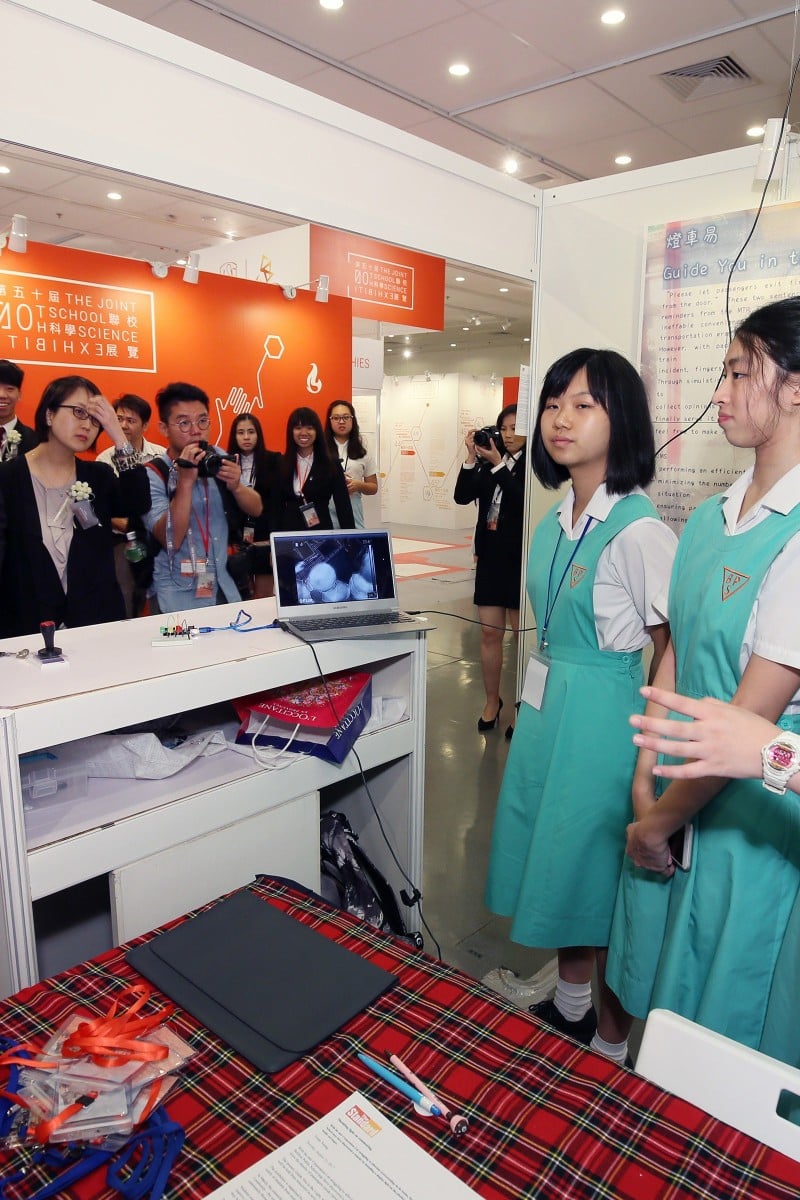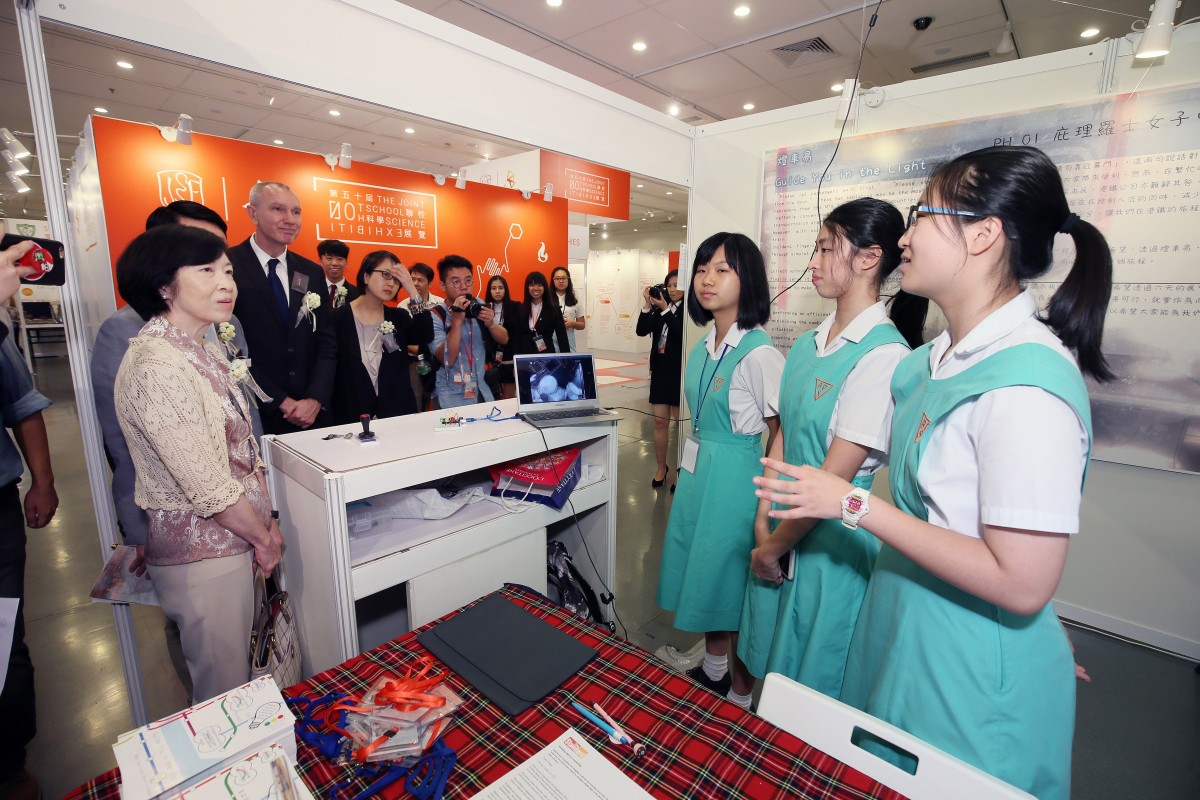
Not even Typhoon Hato could stop innovative students from shining at the 50th Joint School Science Exhibition
Hong Kong’s youth science competition was a big hit despite Typhoon Hato
 Belilios Public School, the JSSE proposal champions, explain their product to guests.
Belilios Public School, the JSSE proposal champions, explain their product to guests. Both local and overseas teams battled it out for honours at the 50th Joint School Science Exhibition (JSSE) which ends today at the Hong Kong Central Library in Causeway Bay.
The 33 participating teams had to use their scientific knowledge to design a product based on this year’s “community” theme. Twenty-three of the teams were from Hong Kong secondary schools, while 10 came from overseas.
The exhibition was a huge success despite its opening day being delayed because of Severe Typhoon Hato.
This year’s proposal champions were Hong Kong’s Belilios Public School, who came up with a heat-sensing camera that could be used on MTR trains. They were inspired by the rush-hour congestion on the local railway. The camera, linked to a computer programme, helps Hongkongers find the most spacious train compartment available.
Salesian English School were praised for their Wise Bus idea which, like that of Belilios, was inspired by the crowded public transport system in Hong Kong. Using an infra-red sensor and radio frequency identification, they would monitor the buses’ positions and relay seating information to passengers’ phones at relevant stops.
India’s Sri Prakash Vidyaniketan Secondary School proposed the Auto Accel Chair, a wheelchair for blind and disabled people. The chair can be controlled using head movement, voice command, or a digital smartphone controller.
